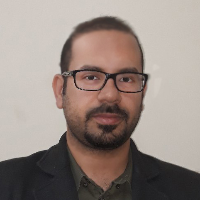Simulating urban surface runoff and prioritizing low-impact development methods using the SWMM model (Case study: Neyshabur)
Recently, the change in hydrological characteristics and the response of the urban watershed to rainfall and flooding has become increasingly evident in terms of quantity and quality for human life and resources. Preventing the waste of these effluents and consequently compensating for the lack of water resources is an effective step in this regard. In this study, rainfall-runoff simulations in SWMM were used to investigate the hydrological response of the Neyshabur urban catchment to production runoff using low-impact development methods under six different scenarios. The inflow data corresponding to the hyetograph of five precipitation events at the outlet point were collected in the field using the float method. Statistical evaluations (Nash-Sutcliffe, RMSE, percent bias, and coefficient of determination) during the calibration and validation phases proved the good performance of the model (peak-discharge and its time). The percentage of impervious surfaces was found to be the most effective parameter for peak runoff discharge. Overall, the implementation of the following scenarios was evaluated: Bio-Retention-Cell, Porous-Paver-Systems, Infiltration-Trench, Vegetative-Swale and the Combination-of-the-Scenarios resulted in a reduction in runoff of 8.51, 9.58, 15.79, 10.25 and 43 percent, respectively. Finally, in the return periods of 2, 5 and 10 years, the best performance has been achieved by Combination-of-the-Scenarios, Infiltration-Trench, Vegetative-Swale, Porous-Paver-Systems and Bio-Retention-Cell. The results of the present study have shown that the implementation of low-impact development strategies together with the conventional urban drainage network in the SWMM is a good estimate for testing the performance and implementation methods of different scenarios for experts and managers.
-
Assessment of Re-Forecast Data in the Modeling of Extreme Rainfall-Runoff Events (Case Study: Floods in the Bakhtiari Basin, Iran, March-April 2019)
Amin Eidipour, Mohammadamin Maddah *, Ali Mohammad Akhoond-Ali
Journal of Water Harvesting Research, Summer and Autumn 2024 -
Use of analytical data and intelligent models in runoff precipitation simulation (Case study: Bazoft basin)
Behzad Zaki, Ali Mohammad Akhoond-Ali *, Manoochehr Fathi-Moghadam, Mohammadamin Maddah
Irrigation Sciences and Engineering,


